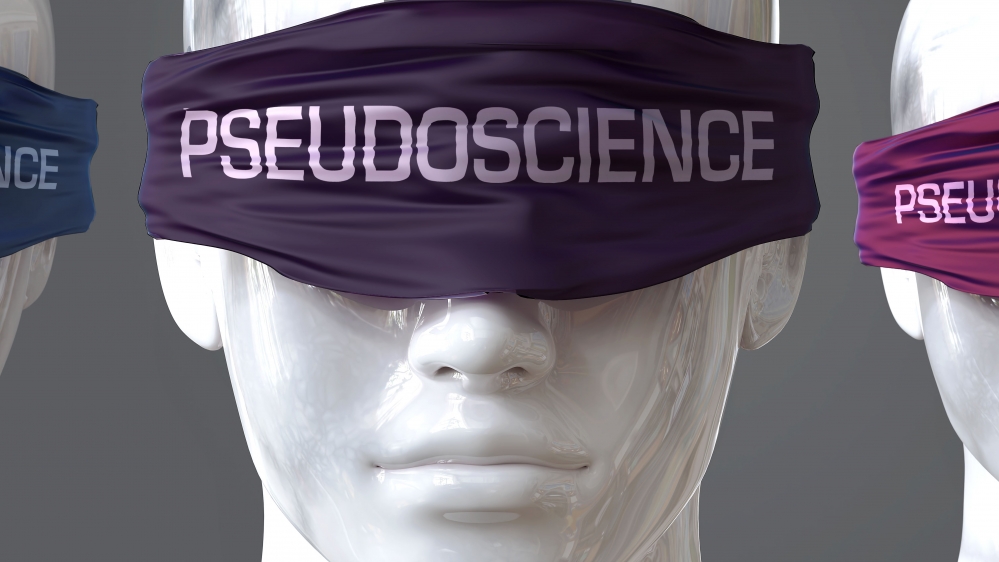Nowadays, the human race faces numerous global challenges such as the coronavirus pandemic, global warming, migration, and civil wars; just to mention a few. In order to better understand these difficulties, it would be rather logical to reach scientific consensus about at least the origins of such phenomena. Science communication comes down to raise awareness about scientific discoveries or academic arguments. It can potentially increase public support for specific researches or advance critical thinking about a given topic by improving perception, interest, and comprehension.
Cheaters take advantage of science’s complexities. Publishers and media are often unable to distinguish between academically proven facts and quack science. With all the data we encounter day by day, it is almost impossible to check the veracity of every and each piece of information. Dubious arguments – that at first glance seem scientific – are sometimes used for promoting goods, services, or political positions.
First, the publication of scientific results is an extremely lengthy process. The academic publishing system itself paves the way for the dissemination of fake scientific information. Speed is a huge advantage of pseudoscience over academically proven research results. The peer review process of a high-standard journal takes several months as the fact-checking and source-analyzing are time-consuming activities. In my experience, scholarly publications pass through the evaluation process in an average of 5-6 months. Therefore, researchers often post their new papers on non-peer reviewed preprint platforms to get their results out as fast as possible.
The second possible reason for the success of pseudo-scientific publications is to be found in our general norms of cognitive behavior. People are more likely to believe to what confirms their pre-existing views. The human mind often favors exoteric but non-scientific statements over “out-of-pattern” research findings that are based on controlled sources. People by nature place far more weight on their own experiences than it would be logically necessarily, making it difficult to reflect on innovative approaches. This is a useful attribute if one has to make fast decisions without having time to objectively evaluate all available information, but it is a heavy burden on our fact-checking abilities.
The third possible explanation for the rapid spread of “fake science” takes us into the world of psychology. Fake scientists are well aware of the flaws in human mind and attempt to exploit our weaknesses. In order to win our sympathy, representatives of fake professionalism often argue that the academic establishment tries to persecute or silence them. Pseudoscientific findings are repeatedly presented as unique or hidden insights that are exclusively available to the few who have invested time and money to gain them.
Representatives of pseudoscience are normally confident people and they do not even have to be genuine experts of their research field. Imposters rarely invite peer researchers to provide counter-arguments or raise any questions or concerns. Fake science is dressed up to look like the real one.
Skillful swindlers use emotional, appealing phrasing. They often invite the audience to explore conspiracies, which makes people use their intellectual skills to understand the correlations between the arbitrarily chosen variables. By doing so, they include the public in the process of thinking, which can be persuasive to many misled people. Unfortunately, people tend to confuse correlation with causation. It is essential to stress that just because we identify a link between two variables, it does not necessarily mean that one is the cause of the other. Last but not least, we cannot avoid talking about the role of modern communication channels. When presenting new scientific achievements, the media tend to display opposing sides.
This kind of forced impartiality – together with all the formalities of “infotainment” might undermine science.
So how can we filter out pseudo-scientific findings? To determine if an argument is credible, one must maintain a healthy balance of skepticism and confidence. Before accepting the validity of an argument, one should request proof, and defer any judgment until the entire data collection has been presented. To this end, at present day, we have more possibilities than ever. There is for instance, the Reddit Science community to share and discuss new scientific researches online. We can find influential TED Talks videos of expert speakers of all fields. Additionally, thanks to “free knowledge movements” and widely available online shadow libraries, we do not even have to have costly subscriptions anymore to access academic databases if we want to check scholarly journal articles or books.
One of the leading challenges is making communication appealing to the general public without jeopardizing scientific attributes such as trustworthiness, objectivity, and transparency. The communication’s quality is determined by its efforts to build and maintain trust, not only by presenting accurate information, but also by illuminating the processes behind knowledge dissemination. Researchers, experts, and journals should promote ethics and integrity in the field of science communication. It is vital that publications contain clearly phrased, commonly understandable, yet well-founded results achieved by a controllable – and preferably reproducible – research method. Well-built and sophisticated communication skills might serve this end. Researchers should use every opportunity to demonstrate the significance of their work and that science is an integral part of their identity.
Ez a cikk magyarulis elérhető.
Cover photo: shutterstock.










